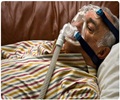A new study published in the October 9, 2007 has reported that using a combination of drugs seems to work in preventing the brain damage inflicted by the same virus.
A new study published in the October 9, 2007, issue of Neurology®, the medical journal of the American Academy of Neurology, has reported that using a combination of drugs, that are generally used to treat HIV infections, seems to work in preventing the brain damage inflicted by the same virus.
The study involved 53 men and women with an average age of 38. The participants were given a combination of several antiretroviral drugs known as Highly Active Anti-Retroviral Therapy (HAART) for one year. Researchers tested the participants’ cerebrospinal fluid before and after treatment to see if there were elevated levels of a particular biomarker for brain injury called neurofilament light protein.The study found 21 people had high levels of the protein, suggestive of brain damage, at the beginning of treatment. But after three months of taking HAART, those high levels of protein fell to normal levels in nearly half of the patients. After one year of treatment, only four people still had high levels of this particular biomarker for brain damage.
In addition, for the 32 patients who had normal levels of the protein at the beginning of the study, all but one remained normal at follow-up.
“This type of treatment appears to halt the neurodegenerative process caused by HIV,” said study author Åsa Mellgren, MD, PhD, with the Clinic of Infectious Diseases SÄS in Borås, Sweden, and the Sahlgrenska Academy at Göteborg University in Göteborg, Sweden. “This study confirms that neurofilament light protein serves as a useful marker in monitoring brain injury in people with HIV and in evaluating the effectiveness of HAART.”
The study also found nine of the 21 people with high levels of the protein had dementia as a result of AIDS and their levels of the protein were significantly higher than those without dementia at the beginning of the study. “But four of these people with dementia did not see their levels return to normal by the end of the study,” said Mellgren. “It’s possible these levels may have reached normal limits if the study had been longer.”
Mellgren says a larger, longitudinal study of the protein is needed that includes more extensive neurological measures, including cognitive testing of the study participants.
Advertisement
GAN/C










